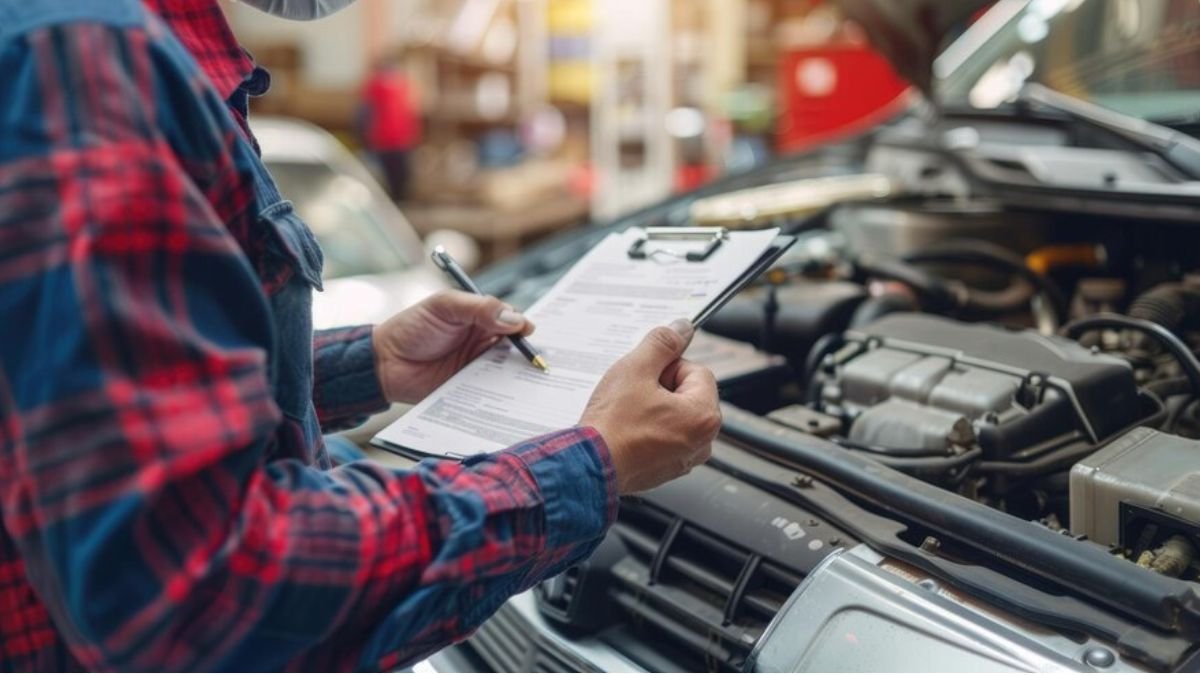All car owners in Melbourne, whether they are experienced drivers or just starting, must understand the procedure of Vehicle Inspection in Melbourne. It is crucial in guaranteeing road safety and adherence to local laws. This comprehensive manual will lead you through every stage of the inspection process, aiding you in getting ready efficiently and manoeuvring through the steps smoothly.
Step 1: Booking Your Inspection
Begin your journey of Vehicle Inspection in Melbourne by locating an accredited station in Melbourne. Kindly schedule your appointment through their internet-based platform, enabling you to select a time that suits your availability. Think about coming when there are fewer people to prevent waiting in long queues. Before deciding, check the station’s reputation by reading online reviews or seeking recommendations from friends and family. A reliable station offers precise evaluations and guarantees that the procedure is transparent and equitable. Making a reservation beforehand allows you to have enough time to get your vehicle ready, ensuring it meets all the required standards.
Step 2: Getting Your Vehicle Ready.
Being prepared is essential for a successful Vehicle Inspection in Melbourne. Start by thoroughly cleaning the vehicle and removing all personal items and trash to present a tidy car. Ensure essential parts like brakes, lights, and turn signals function correctly. Include liquids like oil and coolant, and ensure your windshield wipers are working correctly. Ensure you regularly check your tyres’ pressure and tread depth to avoid any issues during the inspection. “Address the underlying problems by consulting a mechanic for any dashboard alerts.” A well-prepared vehicle passes inspection, demonstrating responsible vehicle ownership.
Step 3: Reaching the Inspection Station
When you reach the inspection point, bring all required documentation, such as your vehicle’s registration and past records of Vehicle Inspection in Melbourne. These papers will make check-in more efficient and give the inspector essential details about your car. While waiting, interact with the station employees to better understand the inspection procedure and what will be examined. This is an excellent time to bring up any recent fixes or changes to your car and include them in the inspection. Taking a proactive approach and staying informed can reduce surprises.
Step 4 Involves Inspecting the Property
The initial evaluation of the outside of your car is critical to determine its condition. The inspector will carefully examine your vehicle for any indications of harm or modifications that could jeopardise its safety or overall condition. They will inspect for rust and significant dents to ensure body repairs meet the required standards.
Step 5: The Inspection of the Inside
The interior inspection examines the functionality and safety aspects of your car. Examining seat belts for signs of wear and ensuring they function is crucial for providing safety during a crash. The inspector will additionally activate the windshield wipers and washers to confirm their ability to clear your vision in bad weather. Every mirror undergoes Vehicle Inspection in Melbourne to ensure correct positioning and clear reflection, offering unrestricted sight of the environment. The horn is checked for functionality, and the dashboard is thoroughly scanned for warning lights that may signal urgent issues.
Step 6: Inside the Engine
This stage of Vehicle Inspection in Melbourne centres on the heart of your vehicle – the engine and its associated components. The inspector inspects the battery’s condition and connections for any signs of corrosion or looseness. The oil and coolant levels are inspected to ensure adequate and high quality to keep the engine temperature at optimal levels. Hoses and belts are checked for signs of damage that could lead to breakdowns or malfunctions. This thorough examination ensures that the engine and its components are in excellent condition, providing reliable performance and preventing surprise malfunctions.
Step 7: Involves Conducting Tests
The safety and control of your vehicle depend significantly on the brakes and suspension. The inspector examines brake pads for responsiveness and wear and inspects suspension for shock absorption and vehicle stability. This assessment could require sophisticated tools to replicate different driving scenarios to evaluate the effectiveness of these systems precisely. Ensuring these parts are in excellent shape helps avoid accidents and provides a comfortable journey, particularly on the varied roads of Melbourne.
Step 8: Conducting Emissions Tests
Testing emissions is essential for protecting the environment and adhering to local regulations. The emissions from your vehicle’s exhaust system will be evaluated during testing. This makes sure that your car stays within pollution limits and runs effectively. Lowering emissions is especially crucial in city areas such as Melbourne, where air quality can substantially affect public health and the environment. This assessment shows how your car helps create a more environmentally friendly community.
Step 9: The Outcome
Once all tests are finished, you will be given a detailed report outlining each assessment’s results. You will receive a roadworthiness certificate if your vehicle meets all safety and regulatory standards. The report will indicate which areas need improvement if any tests are unsuccessful, offering a clear path to compliance. This certificate is essential for renewing or selling vehicles and demonstrating the condition of your car.
Step 10: Following the examination
Keeping the certificate of Vehicle Inspection in Melbourne safe as a vital record after your vehicle passes the inspection is essential. When your car breaks down, focus on fixing the problems that have been highlighted. Utilise the thorough examination report to help you get your vehicle up to the necessary standards for safety and performance. Consistent upkeep and prompt problem-solving can greatly simplify future inspections and extend the longevity of your car.
Step 11: Comprehending Inspection Labels
A sticker will be affixed to your vehicle after a satisfactory Vehicle Inspection in Melbourne, usually on the windshield. This tag signifies that your car has been approved and displays the validity of the duration of the inspection. Comprehending the specifics of this tag is essential for ensuring continued adherence to vehicular standards and regulations in Melbourne. Monitoring your inspection timetable can prevent fines and guarantee ongoing roadworthiness.
Step 12: Protocol for repeated examinations.
Understanding the reinspection process is crucial if your vehicle does not pass the first inspection. This consists of the repair time frame, the process for scheduling a follow-up inspection, and any related fees. Certain stations may provide a free follow-up Vehicle Inspection in Melbourne if you return within a set timeframe after completing the required repairs. Becoming familiar with these procedures will help you effectively handle the situation by promptly addressing any issues to meet safety and regulatory standards.
This blog guarantees you are fully ready for every stage of the car inspection procedure with the assistance of companies like RideCheck in Melbourne. By following these specific directions, your vehicle will stay secure, meet all requirements, and be prepared for driving.











